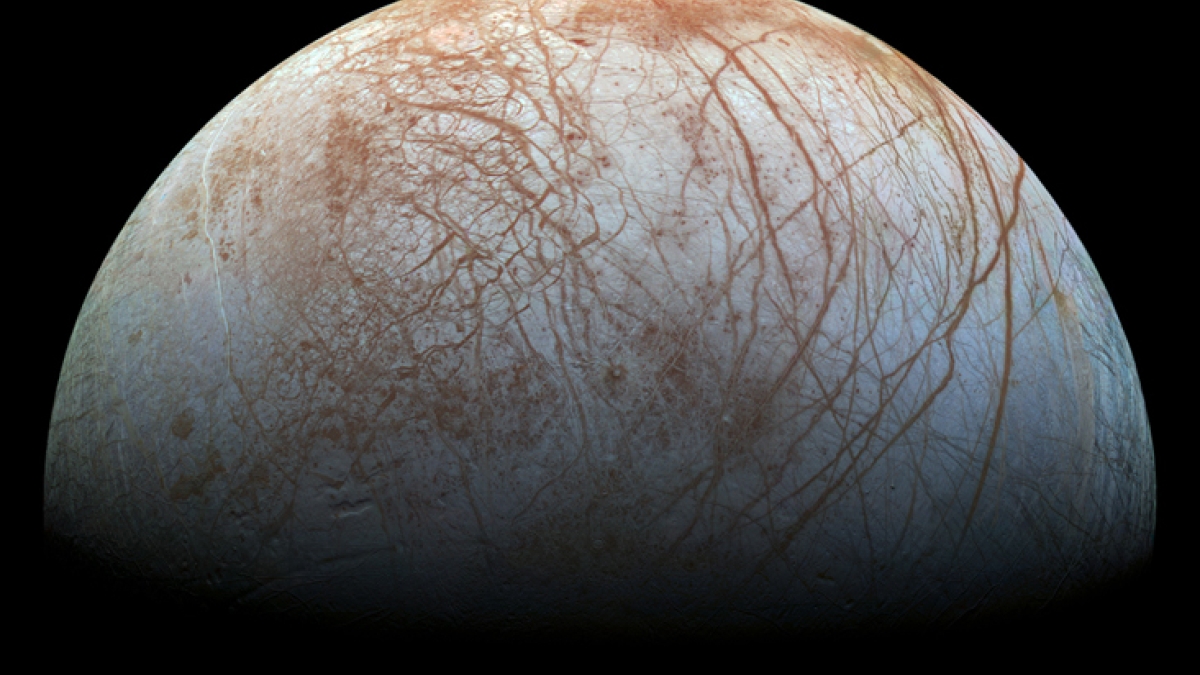ASU scientists play key roles in new NASA mission to Jupiter's moon Europa

Three scientists in Arizona State University's School of Earth and Space Exploration (SESE) – Philip Christensen, Mikhail Zolotov and Everett Shock – are involved with NASA's newly announced robotic mission to investigate whether conditions suitable for life exist at Jupiter's moon Europa.
The mission, scheduled for launch in the 2020s, will follow up on the results of NASA's Galileo mission of 20 years ago. That spacecraft found Europa to be an intriguing body. Its surface is a shell of ice perhaps a few tens of miles thick, covering a saltwater ocean.
The icy surface has numerous colored cracks and spots, perhaps rich in salts, where the ocean water appeared and froze. Observations from Earth orbit using the Hubble Space Telescope have also revealed that Europa erupts plumes of water vapor a hundred miles high or more.
The payload of nine science instruments will greatly increase the limited knowledge of Europa, tackling challenges such as imaging the surface in high-resolution and determining the thickness of the moon’s icy shell and the depth of its ocean.
A thermal instrument will scour Europa’s frozen surface in search of thermal anomalies.
"This is a terrific opportunity for ASU and SESE," said Christensen. A Regents' Professor of geological sciences in SESE, he is the principal investigator for the Europa Thermal Emission Imaging System (E-THEMIS).
"The role E-THEMIS plays in the mission is to act as a heat detector," he explained. "It will scan the surface of Europa at high resolution for warm spots."
Such locations, Christensen said, could be places where the ice shell has become thin, and they are the most likely locations for plume activity.
The E-THEMIS instrument will be built at ASU using the engineers and facilities in SESE on the Tempe campus that are currently building Christensen’s OTES instrument for the OSIRIS-REx mission. ASU will do the instrument design, fabrication, assembly, test and calibration, along with mission operations and science data processing. Ball Aerospace will develop the electronics that will be integrated into E-THEMIS.
"This plays perfectly into SESE's strengths in combining science with engineering," he says.
Shock and Zolotov, co-investigators for the MAss SPectrometer for Planetary EXploration/Europa (MASPEX), will apply their geochemistry expertise to interpret the results.
“In order to assess habitability of Europa, we will need to gather information about composition of surface materials and understand their relations with putative water ocean,” said Zolotov, who is also a co-investigator on the Radar for Europa Assessment and Sounding: Ocean to Near-surface (REASON) and SUrface Dust Mass Analyzer (SUDA).
The MASPEX and SUDA instruments will be used to sample Europa’s thin atmosphere, including plume emissions and small particulates of minerals and ice lofted into space.
“We anticipate lots of data, but the meaning of the data for the habitability of Europa will require additional experiments, calculations and theoretical modeling, which are major strengths of the combination of geochemistry, biochemistry and planetary science in SESE and at ASU,” Shock said.
The School of Earth and Space Exploration is a unit of ASU's College of Liberal Arts and Sciences.